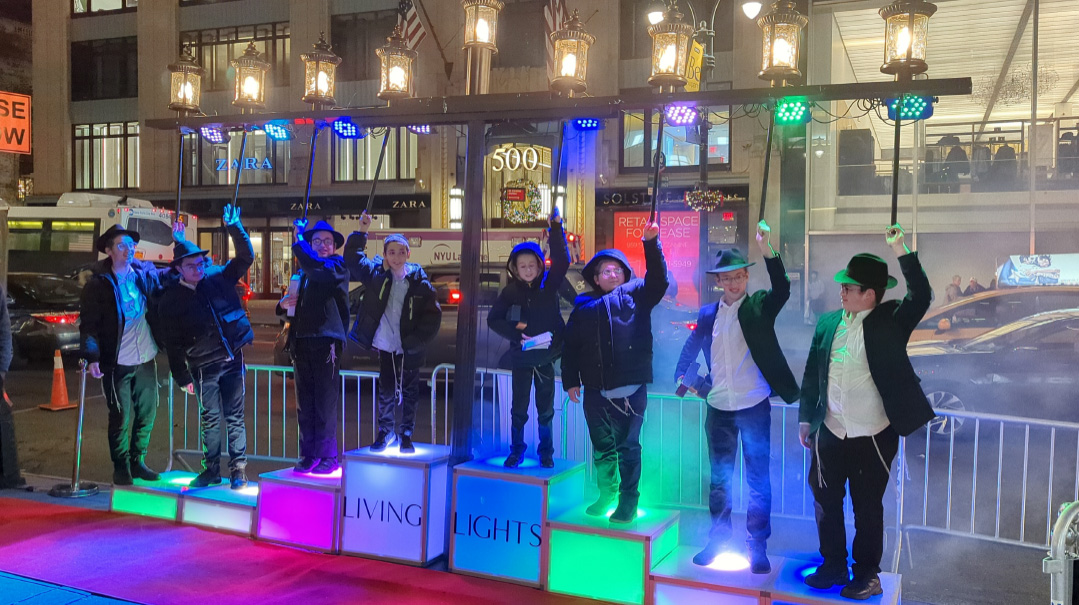Blow by Blow
| September 29, 2024Shofar maker, Shimon Keinan, 77, is constantly on the lookout for the perfect ram’s horn

Photos: Menachem Kalish
From the markets in Marrakesh to a workshop in the Golan, Shimon Keinan is constantly on the lookout for the perfect ram’s horn. The sound of the shofar has been in his bones since he was a kid in Casablanca, and now he’s finally fulfilling his dream — fashioning those horns for people around the world, yet saving his best one for the Great Shofar
The Marrakesh market in Morocco is bustling, as usual, with pungent scents of exotic spices penetrating the sultry air and eye-catching checkered fabrics hanging over the stalls and alleyways. But 77-year-old Shimon Keinan, a shofar maker from Moshav Givat Yoav on the southern slopes of the Golan Heights, isn’t letting himself get distracted by the attack on his senses. He’s here on the lookout for only one thing: the perfect Moroccan ram’s horns for his shofar factory. (A kosher shofar need not be from an animal that was slaughtered properly by shechitah, as long as it originates from a kosher species.)
He walks carefully between the stalls, gently running his fingers along every ram’s horn he sees, skillfully inspecting the curvature and natural luster. For him, each one of these raw, unprocessed horns, sold for a variety of uses to the general public, is a treasure — for he can sense the potential of each one to become a shofar. Even amid the noisy din of the Marrakesh market, Keinan hears the holy sounds of Rosh Hashanah.
Trade Secrets
Today, Shimon Keinan’s family-run shofar workshop and visitor center, called Kol Shofar, is a popular tourist attraction for visitors to Israel’s north, and one of the most reliable places in the country to purchase a kosher shofar. What started as a literal backyard hobby shop in the 1990s actually has its roots in Keinan’s childhood in Casablanca, Morocco.
“I discovered the shofar walking with my father to the beit knesset when I was a child,” he says. “I was captivated right away, and it wasn’t long before I learned how to blow the shofar myself. By age ten, I was already a proficient shofar blower, but we were poor and I didn’t have the means to buy a real shofar, so I improvised and made my own. I took rubber tubing, wound it in a coil, and attached a tin funnel to the end for the sound to come out — it looked a bit like a French horn — and that’s how I practiced as a kid.
Of course, he practiced on real shofars, too, and by the time he was 18, he was an official baal tokeia. “I went on to serve as baal tokeia for close to a decade in two shuls — one Sephardic and one Ashkenazi,” he says. “That’s how I learned about the different minhagim in each community.”
Years later, he decided to try his hand at making a shofar himself. “We’d moved to Givat Yoav, and we’d slaughtered a wild sheep on the moshav for some festive occasion,” he recalls (while domesticated sheep often don’t have horns, wild sheep — both rams and even female ewes — begin to grow horns at around a year old). “While everyone sat and feasted, I asked for the horn. I then did my best to process it and the result was actually quite beautiful. Shofar making has been a part of me ever since.”
For years, Keinan only produced shofars in his spare time as a hobby. He was a metal worker by profession, but when he was in his 50s and had created a nest egg of financial security, he decided to turn his passion into a reality. He closed his lucrative metal factory to focus exclusively on shofars.
“I felt tremendous siyata d’Shmaya,” he says. “Through my rav, I managed to get in touch with an elderly shofar maker who wanted to pass on his knowledge before he passed away. For two years, I would travel to his workshop in south Tel Aviv to learn the trade secrets of shofar making. Once I understood the technique, I was able to develop tools and machines that helped me refine the process and improve on the traditional production methods in order to make the best shofars out there. It was my dream come true.
Oops! We could not locate your form.







